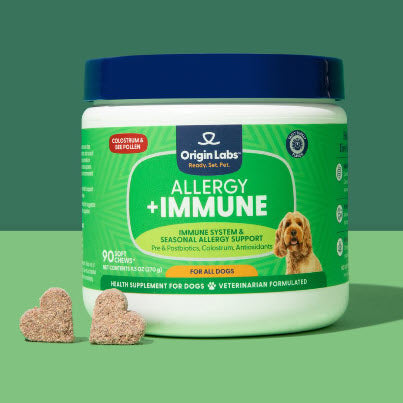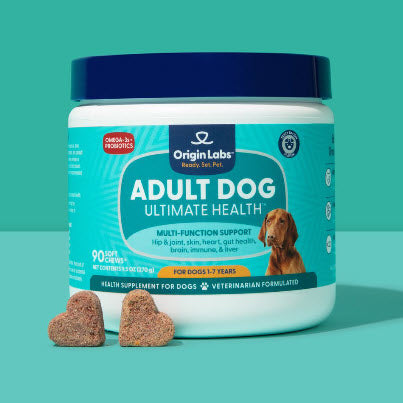Introduction
Pet owners often wonder if it's safe for their dogs to eat brown rice. The answer is yes—brown rice can be a healthy option for dogs, providing them with fiber and essential vitamins. However, it's important to remember that brown rice should only be given to dogs in moderation, just like any other human food.
In this article, we will explore the nutritional value of brown rice and address common concerns such as whether or not brown rice is bad for dogs. We'll also discuss how adding this grain to your dog's meals can be beneficial for their overall health when done correctly. Understanding the potential risks associated with feeding brown rice to your dog is just as important as knowing its benefits.
Feeding our furry friends involves more than just filling their bowls; it's about making sure they're getting all the nutrients they need to thrive. Brown rice can be a part of that balanced diet. However, there are additional measures you can take to support your dog's well-being, such as incorporating probiotics for dogs like Belly Buddies into their routine. These probiotics formulated specifically for dogs can help alleviate issues like itchy skin, while also supporting the gut and immune system with 5 Billion CFUs + Prebiotics.
As we delve into the topic of feeding brown rice to dogs safely and effectively, it's essential to remember that every pet is different. They may have specific dietary requirements that require professional guidance, especially if they have issues like allergies or a sensitive stomach.
Fun Fact: Did you know? Dogs have been domesticated for over 15,000 years! They've come a long way from their wolf ancestors.
Now let's get started by looking at the nutritional value of brown rice and why it can be a good addition to your dog's diet.
The Nutritional Composition of Brown Rice
When it comes to dog food, brown rice stands out as a nutrient-rich ingredient that contains several beneficial elements. For starters, let's delve into what brown rice is and how it sets itself apart from white rice.
Brown rice is a type of whole grain rice. Unlike white rice, it retains the bran and germ layers on the grain, which are removed in white rice. This difference in processing results in brown rice having more nutrients than its white counterpart.
Given that brown rice is a whole grain, it's packed with vital nutrients needed for your dog’s health. Here are some key nutrients found in brown rice:
- Fiber: A necessary component for good digestion, fiber helps keep your dog's bowel movements regular and can aid in weight management by making them feel full faster.
- Vitamins: Brown rice contains several B vitamins such as B1 (Thiamin), B3 (Niacin), and B6 (Pyridoxine). These vitamins play crucial roles in energy metabolism, nerve function, and red blood cell formation.
- Minerals: Essential minerals like magnesium and manganese are also present in brown rice. Magnesium contributes to bone health while manganese aids in the metabolism of proteins and carbohydrates.
In addition to these nutrients, brown rice provides high-quality carbohydrates that serve as an excellent source of energy for your furry friend. It's worth noting that while brown rice is nutritious, it should be included as part of a balanced diet rather than being the sole component of your dog’s meal plan.
While we have established the richness of brown rice in terms of nutrition, it’s also important to note that not all types of grains may be suitable for every dog. As we delve deeper into this subject matter, we will discuss the potential risks associated with feeding dogs with brown rice.
Health Benefits of Feeding Brown Rice to Dogs
The inclusion of brown rice in a dog's diet can yield numerous health benefits. Not just an ordinary grain, it's packed with nutrients that can contribute positively to your dog's wellbeing.
1. Improved Digestion
Brown rice serves as an excellent source of dietary fiber. This aids in the regulation of bowel movements, ensuring your dog maintains optimal digestion. A diet rich in fiber can help prevent instances of constipation and promote overall gut health.
2. Sustained Energy
The complex carbohydrates present in brown rice provide a steady release of energy. This is particularly beneficial for active dogs who require sustained energy throughout the day. Unlike simple carbohydrates that lead to sugar spikes, complex carbs from brown rice offer a stable and prolonged energy output.
3. Essential Vitamins
Brown rice is also enriched with essential B vitamins such as B1, B3, and B6. These vitamins play key roles in maintaining a healthy nervous system, promoting skin health, and facilitating the metabolism process in dogs.
4. Heart Health Support
Another noteworthy aspect is its potential to support heart health. Brown rice contains magnesium, which plays a vital role in cardiovascular health by controlling blood pressure levels and reducing the risk of heart disease.
5. Alternative to Grain-Free Diets
Finally, as a whole grain, brown rice is a great alternative to grain-free dog foods. It provides the necessary nutrients without leading to dietary deficiencies associated with some grain-free diets.
While these benefits make a compelling case for including brown rice in your dog's diet, it's always important to remember that every dog is unique. What works for one might not work for another. Always pay attention to how your dog reacts to new foods, and consult with a veterinarian if you notice any adverse reactions.
Potential Risks and Concerns Associated with Brown Rice for Dogs
While brown rice is a healthy choice for dogs, it's important to be aware of some potential risks and concerns:
1. Digestive Sensitivities
- Some dogs may have sensitivities to grains, including brown rice, which could result in an upset stomach. Signs of discomfort may include bloating or gas.
- Dogs with a history of gastrointestinal problems might not tolerate brown rice well. In cases of diarrhea or other digestive issues, white rice is often recommended due to its lower fiber content and higher digestibility.
2. Nutritional Balance
- Brown rice is high in calories. It's crucial to ensure that it makes up an appropriate portion of your dog's caloric intake to prevent weight gain.
- While brown rice is nutritious, relying too heavily on it in your dog's diet can lead to an imbalance. It should be used as a complement to their regular intake of proteins and other essential nutrients.
3. Comparison with White Rice
- Despite the higher nutritional value of brown rice, white rice can be beneficial for dogs with acute digestive issues. It provides quick energy and is easier on the stomach due to its low fiber content.
Feeding brown rice should take these factors into consideration. The portion size, your dog's health condition, and their overall diet all play a role. If you have any concerns about adding brown rice to your dog's diet, it's best to consult with a veterinarian.
When deciding between brown or white rice, think about the nutritional benefits versus the potential digestive issues for your individual dog. Now, let's explore some practical tips on how to incorporate brown rice into your dog's meals if you've decided it's a good fit.
Feeding Brown Rice to Your Dog: Best Practices
Incorporating brown rice in your dog's diet can offer numerous dog health benefits of brown rice. Here are some best practices to ensure that this nutritious grain serves as an advantageous addition to your dog’s meal plan:
Consult with a Veterinarian
Before introducing brown rice or any new dog food ingredients, schedule a consultation with your veterinarian. Each dog has unique dietary needs, and professional guidance is indispensable for tailoring their diet to their specific health requirements.
Portion Control
- Measure Properly: A rule of thumb is that grains, including brown rice, should only make up a small portion of the diet — typically around 10%.
- Start Small: If your dog has never had brown rice before, begin with a small quantity to see how they react digestively.
Preparation Methods
- Cook Thoroughly: Ensure the brown rice is well-cooked to improve digestibility. Undercooked rice can be hard on a dog's stomach.
- Plain Is Best: Cook the rice plainly, without any added salt, spices, or seasonings that could be harmful to dogs.
- Cool It Down: Allow the cooked rice to cool down before serving it to prevent any chance of burning your pet’s mouth.
Quality Matters
Opt for high-quality brown rice. Organic and pesticide-free options are preferable to minimize exposure to potential toxins.
Mix It Up
Introduce brown rice into your dog’s diet by mixing it with their regular food. This can help prevent digestive upset from a sudden change in diet and allows them to adjust gradually.
Storage and Safety
- Refrigerate Leftovers: Store leftover cooked brown rice in the refrigerator and use it within three days.
- Watch for Spoilage: Discard any rice that smells off or shows signs of mold.
By following these guidelines, you can safely add brown rice as a supplementary ingredient in your dog’s meals. Next, we will delve into the differences between brown and white rice and discern which might be more beneficial for your canine companion.
Brown Rice vs. White Rice: Making the Right Choice for Your Dog
When it comes to brown rice vs white rice for dogs, it's important to understand the nutritional differences and digestibility of each.
Brown Rice
Brown rice is a whole grain that retains its bran and germ layers, which are rich in nutrients. This segment of the grain contains considerable amounts of:
- Fiber
- Essential amino acids
- B vitamins
- Magnesium
- Manganese
These nutrients are beneficial for your dog's overall health, offering an energy source and aiding digestion. The high fiber content can also contribute to feelings of fullness, potentially helping with weight management in dogs.
White Rice
White rice, on the other hand, undergoes a refining process that removes the bran and germ layers. This results in a grain that's lower in fiber and certain nutrients. However, white rice is:
- More easily digestible
- Lower in fiber
- Has a higher glycemic index (can raise blood sugar levels)
While it may not offer the same nutrient profile as brown rice, its enhanced digestibility makes white rice a suitable option for dogs with sensitive stomachs or those recovering from gastrointestinal issues.
Nutritional Comparison
Here's a side-by-side comparison to highlight these differences:
| Nutrient | Brown Rice | White Rice | | --- | --- | --- | | Fiber | High | Low | | Amino Acids | High | Moderate | | B Vitamins | High | Low | | Magnesium | High | Low | | Manganese | High | Low | | Digestibility | Moderate | High |
Making the Best Choice for Your Dog
Choosing between brown rice and white rice depends on your dog's individual health needs. If your focus is on providing a nutrient-dense diet, then brown rice could be the better option due to its superior nutritional composition. However, if your dog has a sensitive stomach or is recovering from illness, white rice might be the more appropriate choice due to its ease of digestion.
It's important to remember that all dogs are unique, and there isn't a one-size-fits-all answer. A consult with a veterinarian will help determine which type of rice is better suited for your dog's diet.
Other Types of Rice for Dogs: Exploring Alternatives to Brown Rice
When it comes to feeding rice to dogs, brown rice is not the only option. There are other types of rice that can be safe and beneficial for dogs. One such alternative is whole grain rice.
Whole Grain Rice for Dogs
Whole grain rice, also known as wild rice, is a nutrient-dense food that can offer various health benefits to dogs. It's packed with fiber, protein, and essential minerals like iron and zinc. Just like brown rice, whole grain rice is a fantastic source of complex carbohydrates that provide sustained energy for your furry friend.
Unlike white and brown rice, whole grain rice retains its "hull," or outer shell during processing. This feature gives it a higher nutritional value as the hull contains nutrients that are stripped away in white and brown rice processing.
However, because of this hull, whole grain rice can be harder for dogs to digest than brown or white rice. Therefore, it should be served cooked and in moderation.
Some other alternatives include:
- Red Rice: This variety of rice is rich in antioxidants and has a nutty flavor that some dogs may enjoy. It's also an excellent source of iron and calcium.
- Black Rice: Also known as forbidden rice, black rice has the highest antioxidant levels of any type of rice. It's packed with fiber and offers a good amount of Vitamin E.
- Basmati Rice: Although it's typically more expensive than other types of rice, basmati can be a good option for dogs due to its low glycemic index, which means it doesn't cause a rapid rise in blood sugar levels.
Remember that despite their benefits, these varieties should make up only a small part of your dog's diet — most nutrition should come from high-quality commercial dog food or a balanced homemade diet approved by your vet.
Conclusion
When considering the introduction of brown rice into your canine companion's diet, it's essential to reflect on their unique nutritional needs. Always remember to:
- Assess your dog's dietary requirements and any health concerns.
- Seek advice from a veterinarian about the suitability of brown rice for your pet.
Brown rice can be an excellent addition to a dog's diet when used judiciously. It offers:
- Fiber: Aids in digestion and maintains bowel health.
- Essential amino acids: Crucial building blocks for a healthy body.
- B vitamins, magnesium, and manganese: Support metabolic functions and overall well-being.
Balance is key; hence, brown rice should be administered as part of a comprehensive and nutritious diet. When you provide your dog with brown rice:
- Ensure it's cooked plainly and devoid of any harmful additives.
- Adhere to appropriate portion sizes aligned with the 10% treat rule to prevent overfeeding.
The benefits of brown rice for dogs are clear, making it a wholesome choice for those seeking to enrich their pet's meal plan. By thoughtfully integrating this grain while prioritizing moderation, owners can contribute positively to their dog's health and vitality.
FAQs (Frequently Asked Questions)
Can dogs eat brown rice?
Yes, dogs can eat brown rice. In fact, it can be a beneficial addition to their diet due to its nutritional value.
Is brown rice bad for dogs?
Brown rice is not bad for dogs when given in moderation. It provides essential nutrients and can be part of a balanced diet for them.
Can my dog eat brown rice?
Yes, your dog can eat brown rice. It is important to consult with a veterinarian before making any changes to your dog's diet, but in general, brown rice can be a healthy option for them.
What are the potential advantages of feeding brown rice to dogs?
Feeding brown rice to dogs can provide benefits such as improved digestion and serving as an energy source for them.
Are there any potential drawbacks of feeding brown rice to dogs?
Some potential concerns associated with feeding brown rice to dogs include issues related to white rice and the need for calorie control. It's important to monitor portion sizes and consult with a veterinarian if there are any concerns.
How does brown rice compare to white rice for dogs?
Brown rice offers more nutritional value compared to white rice for dogs, including higher fiber content and essential vitamins and minerals. It may be a better choice for their overall health and well-being.








